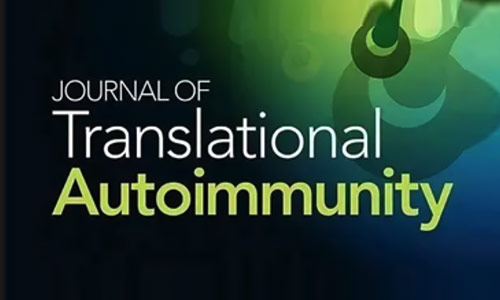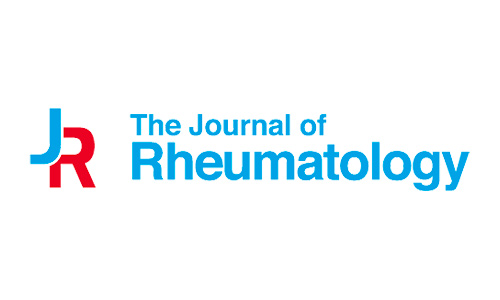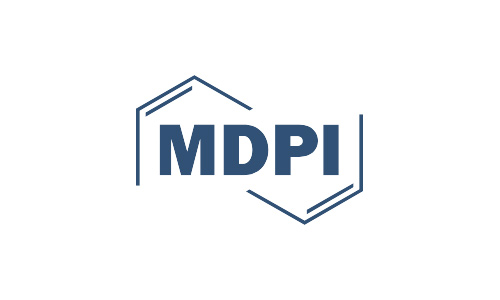- Follow Us
Scientific Publications
High-profile publications featuring CDI Labs next-gen proteomics technologies and services
354 Total Publications
Refine Your Search
Publication Details
- Date
- Link
- + Abstract

Journal of Translational Autoimmunity
- Main Product: HuProt
- The antibody repertoire of autoimmune sensory neuronopathies targets pathways of the innate and adaptive immune system. An autoantigenomic approach
- Christian P. Moritz, Yannick Tholance, Nadia Boutahar, Coralie Borowczyk, Anne-Emmanuelle Berger, Stéphane Paul,...
- Synaptopathies and Autoantibodies (SynatAc) Team, Institut NeuroMyoGène, Université Claude Bernard Lyon
Sensory neuronopathies (SNN) encompass diverse etiologies, with autoimmunity playing a major role through both cellular and humoral responses. To investigate the humoral autoantibody repertoire in autoimmune SNN, we conducted a retrospective cohort study using large Human Proteome-wide protein microarrays (HuProt 3.1, HuProt 4.0, ProtoArrays). We specifically analyzed immune system pathways targeted within the autoantigen repertoire (the autoantigenome).

Journal of Clinical Oncology
- Main Product: HuProt
- Role of autoimmune reactivity in neurotoxicities (N-Tox) in melanoma patients treated with immune-checkpoint inhibitors (ICI)
- Agrima Dutt, Yue Pan, Jiyeon Son, Milad Ibrahim, Onyekwere Onwumere, Huilin Li, and Iman Osman
- New York University Grossman School of Medicine
N-Tox is a grossly understudied immune-related adverse event (irAE), despite its association with mortality (e.g. encephalitis) and morbidities (e.g. peripheral neuropathy). We reported that pre-treatment sera autoantibodies (auto-Abs) are implicated in the pathogenesis of irAEs (Johannet et al. CCR 2022). We here examined the rate and patterns of N-Tox in melanoma patients who received ICI in the adjuvant setting and whether baseline specific serum auto-Abs are associated with N-Tox.

Elsevier - Medical Hypotheses
- Main Product: HuProt
- Do circulating autoantibodies commonly found in healthy individuals reduce cancer risk?
- Fen Wu, Yu Chen, Jun Wang, Alan A. Arslan, Karen Koenig, Anne Zeleniuch-Jacquotte
- Dept of Population Health, NYU Grossman School of Medicine
Of the three stages of cancer immunoediting (elimination, equilibrium and escape), the first stage, elimination, where the destruction of early cancer cells prevents them to progress to the subsequent stages of immunoediting and thus prevents cancer development, has been the least studied. Recent laboratory research suggests that autoantibodies (AAbs) play a role in the elimination stage, through recognition of either neoantigens or tumor-associated antigens (TAAs) present on transforming cells.

The Journal of Rheumatology
- Main Product: HuProt
- Novel Autoantibodies Identified in the Antiphospholipid Syndrome
- Shikai Hu, Yangzhong Zhou, Menghua Cai, Mengtao Li and Jiuliang Zhao
- Peking Union Medical College Hospital
The antiphospholipid syndrome (APS) is a systemic autoimmune disease characterized by arterial, venous, or microvascular thrombosis, recurrent pregnancy morbidity, or nonthrombotic manifestations in the setting of persistent antiphospholipid antibodies (aPL), namely anti-β2 glycoprotein-I antibody (aβ2GPI), anticardiolipin antibody (aCL), and lupus anticoagulant (LAC). Around one-third of the APS patients had an isolated LAC positivity lacking aβ2GPI and aCL. This study aimed to identify novel autoantibodies in APS using protein microarray technology.

MDPI - Vaccines
- Main Product: HuProt
- Proteomic Profiling of Human Peripheral Blood Cell Targets of IgG Induced by SARS-CoV-2: Insights into Vaccine Safety
- Nicolle Rakanidis Machado, Lais Alves do Nascimento, Beatriz Oliveira Fagundes, João Vitor da Silva Borges, Fabio da...
- Laboratory of Medical Investigation LIM-56, Medical School, University of São Paulo
Background/Objectives: COVID-19 has been associated with a wide range of immune responses, including the production of autoantibodies, particularly in severe cases. This study investigates the IgG autoantibody responses in patients with varying severities of COVID-19 infection and compares these responses with vaccinated individuals. Methods: We utilized proteomic profiling to analyze autoantibody reactivity against a broad spectrum of proteins expressed in lymphoid and myeloid cell subsets in serum samples from severe and moderate COVID-19 patients, as well as vaccinated individuals who received the inactivated CoronaVac (Sinovac) vaccine.

Open Forum Infectious Diseases
- Main Product: HuProt
- Molecular Mimicry Drives Locally Produced Autoantibodies in Subarachnoid Neurocysticercosis
- Janitzio J Guzmán, Aissatou Bah, Sasisekhar Bennuru, Sarah Harrison, Theodore E Nash, Joshua Sciurba, Lauren Thumm,...
- Helminth Immunology Section, National Institute of Allergy and Infectious Diseases
Subarachnoid neurocysticercosis (SANCC) is a condition manifested by chronic meningitis induced by infection with Taenia solium. We sought to determine if there is evidence of autoantibody production in SANCC and whether local production of autoantibodies could be driven by immunogenic homologues found in T. solium.

Elsevier - Journal of Immunological Methods
- Main Product: HuProt
- Deciphering the autoreactome: Massively parallelized methods for autoantibody detection in humans
- Nicolai V. Hörstke , Thomas Vogl
- Center for Cancer Research, Medical University of Vienna
Autoantibodies have a substantial impact on human health ranging from autoimmune diseases to cancer diagnostics. Knowledge of the antigens recognized can allow for more accurate diagnostics, a better understanding of pathogeneses and thus improved prevention, as well as laying the foundation for the development of new therapies. A critical step to acquire this knowledge is to detect the exact self-antigens targeted by autoantibodies out of the pool of 20,000 human proteins against which reactivities could be observed.

Nature - Communications Medicine
- Main Product: HuProt
- Preclinical characterization of an active immunotherapy targeting calcitonin gene-related peptide
- Justin D. Boyd, Shixia Wang, Hsiao-Wen Lin, Yueh-Ting Hsieh, Yu Shuang Sun, Brett A. Thibodeaux, Hanxin Lu, Jaya Sahni,...
- Vaxxinity Inc.
The success of passive immunotherapies targeting Calcitonin gene-related peptide (CGRP) for managing migraine has prompted our efforts towards developing an active immunotherapy that induces the production of endogenous antibodies against CGRP. Achieving efficacious antibody titers via immunization could provide a more convenient and cost-effective treatment alternative to anti-CGRP monoclonal antibody (mAb) therapies. However, immunization against endogenous CGRP faces multiple challenges such as breaking immune tolerance, inducing sufficient antibody titers, and avoiding immune response-associated toxicity.

Exploration
- Main Product: HuProt
- Emerging Target Discovery Strategies Drive the Decoding of Therapeutic Power of Natural Products and Further Drug Development: A Case Study of Celastrol
- Yanbei Tu, Guiyu Dai, Yanyan Chen, Lihua Tan, Hanqing Liu, Meiwan Chen
- School of Pharmacy, Jiangsu University
Celastrol (CEL) is a natural pentacyclic triterpenoid demonstrating significant therapeutic properties against various diseases. However, the ambiguity of target information poses a significant challenge in transitioning CEL from a traditional remedy to a modern pharmaceutical agent. Recently, the emerging target discovery approaches of natural products have broadened extensive avenues for uncovering comprehensive target information of CEL and promoting its drug development. Herein, diverse target discovery strategies are overviewed for the pharmacological and toxicological studies of CEL, including chemical proteomics, protein microarray, degradation-based protein profiling, proteome-wide label-free approaches, network pharmacology, target-based drug screening, multi-omics analysis, and hypothesis-driven target confirmation.

AACR - Cancer Research
- Main Product: HuProt
- Baseline serum level of IgG targeting annexin A2 is predictive of response to immunotherapy in patients with advanced NSCLC
- Matthieu Roulleaux Dugage, François-Xavier Danlos, Mélodie Bonvalet, Tyler Hulett, Sabine Messayke, Anne-Laure Voisin,...
- Gustave Roussy
Despite the success of immune checkpoint blockers (ICBs), predicting which patients will respond to treatment remains a significant challenge, particularly in those with advanced NSCLC. Some circulating antibodies may serve as indicators of a pre-existing antitumor adaptive immune response. This study investigated the potential of baseline serum antibodies as predictors of response and survival in patients with advanced NSCLC undergoing ICB, chemotherapy, or ICB + chemotherapy.